Potrebujeme váš súhlas na využitie jednotlivých dát, aby sa vám okrem iného mohli ukazovať informácie týkajúce sa vašich záujmov. Súhlas udelíte kliknutím na tlačidlo „OK“.
ASTM D7684-11
Standard Guide for Microscopic Characterization of Particles from In-Service Lubricants
Automaticky preložený názov:
Štandardné Sprievodca pre Mikroskopické Charakteristika častíc z In-Service Lubricants
NORMA vydaná dňa 1.1.2011
Informácie o norme:
Označenie normy: ASTM D7684-11
Poznámka: NEPLATNÁ
Dátum vydania normy: 1.1.2011
Kód tovaru: NS-38955
Počet strán: 9
Približná hmotnosť: 27 g (0.06 libier)
Krajina: Americká technická norma
Kategória: Technické normy ASTM
Kategórie - podobné normy:
Anotácia textu normy ASTM D7684-11 :
Keywords:
analytical ferrography, condition monitoring, contaminant particles, filter patch, in-service lubricants, membrane filtration, particle analysis, wear, wear debris analysis, wear particle analysis, wear particles, ICS Number Code 75.100 (Lubricants, industrial oils and related products)
Doplňujúce informácie
| Significance and Use | ||||||||||||||||
|
The objective of particle examination is to diagnose the operational condition of the machine sampled based on the quantity and type of particles observed in the oil. After break-in, normally running machines exhibit consistent particle concentration and particle types from sample to sample. An increase in particle concentration, accompanied by an increase in size and severity of particle types, is indicative of initiation of a fault. This guide describes commonly found particles in in-service lubricants, but does not address methodology for quantification of particle concentration. This guide is provided to promote improved and expanded use of particulate debris analysis with in-service lubricant analysis. It helps overcome some perceived complexity and resulting intimidation that effectively limits particulate debris analysis to the hands of a specialized and very limited number of practitioners. Standardized terminology and common reporting formats provide consistent interpretation and general understanding. Without particulate debris analysis, in-service lubricant analysis results often fall short of concluding likely root cause or potential severity from analytical results because of missing information about the possible identification or extent of damaging mechanisms. Caution shall be exercised when drawing conclusions from the particles found in a particular sample, especially if the sample being examined is the first from that type of machine. Some machines, during normal operation, generate wear particles that would be considered highly abnormal in other machines. For example, many gear boxes generate severe wear particles throughout their expected service life, whereas just a few severe wear particles from an aircraft gas turbine oil sample may be highly abnormal. Sound diagnostics require that a baseline, or typical wear particle signature, be established for each machine type under surveillance. |
||||||||||||||||
| 1. Scope | ||||||||||||||||
|
1.1 This guide covers the classification and reporting of results from in-service lubricant particulate debris analysis obtained by microscopic inspection of wear and contaminant particles extracted from in-service lubricant and hydraulic oil samples. This guide suggests standardized terminology to promote consistent reporting, provides logical framework to document likely or possible root causes, and supports inference associated machinery health condition or severity based on available debris analysis information. 1.2 This guide shall be used in conjunction with an appropriate wear debris analysis sample preparation and inspection technique including, but not limited to, one of the following: 1.2.1 Ferrography using linear glass slides, 1.2.2 Ferrography using rotary glass slides, 1.2.3 Patch analysis using patch makers (filtration through membrane filters), 1.2.4 Filter debris analysis, 1.2.5 Magnetic plug inspection, or 1.2.6 Other means used to extract and inspect particulate debris from in-service lubricants. 1.3 This standard is not intended to evaluate or characterize the advantage or disadvantage of one or another of these particular particle extraction and inspection methods. 1.4 The values stated in SI units are to be regarded as standard. No other units of measurement are included in this standard. 1.5 This standard does not purport to address all of the safety concerns, if any, associated with its use. It is the responsibility of the user of this standard to establish appropriate safety and health practices and determine the applicability of regulatory limitations prior to use. |
||||||||||||||||
| 2. Referenced Documents | ||||||||||||||||
|
Podobné normy:
Historická
1.9.2014
Historická
1.8.2011
Historická
15.9.2013
Historická
1.6.2007
Historická
15.11.2013
Historická
1.5.2012
Odporúčame:
Aktualizácia zákonov
Chcete mať istotu o platnosti využívaných predpisov?
Ponúkame Vám riešenie, aby ste mohli používať stále platné (aktuálne) legislatívne predpisy
Chcete vedieť viac informácií ? Pozrite sa na túto stránku.


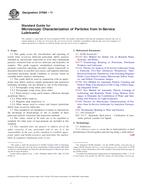
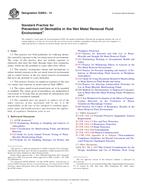 ASTM E2693-14
ASTM E2693-14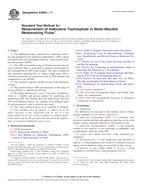 ASTM E2694-11
ASTM E2694-11 ASTM F2489-06(2013)..
ASTM F2489-06(2013)..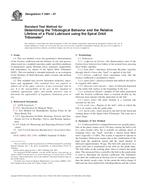 ASTM F2661-07
ASTM F2661-07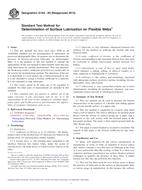 ASTM G164-99(2013)..
ASTM G164-99(2013)..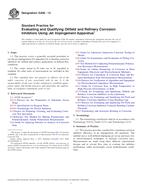 ASTM G208-12
ASTM G208-12
 Cookies
Cookies
